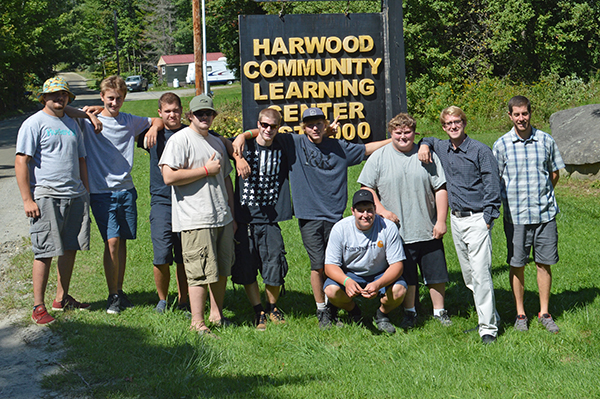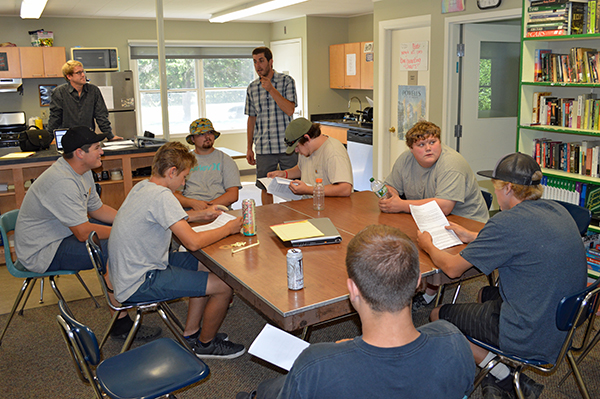Harwood students who choose to utilize the Harwood Community Learning Center (HCLC) master skills that most students are still struggling with well into their college years.
Across the road from Harwood Union High School and tucked back into the woods lies the Harwood Community Learning Center. The building is as unassuming as the students are. On Tuesday, in a small group, they were discussing how older generations perceive millennials.

The HCLC is one of Hardwood’s four flexible pathways to graduation. With the introduction of Act 77 in 2013, the state mandates that schools have flexible pathways to graduation; however, the HCLC was established in 2000.
The HCLC is an alternative to the mainstream high school curriculum that Harwood offers all students.
While all high schools must have these programs now, Harwood’s is one of the more developed in the state, said Amy Rex, Harwood co-principal.
Students who know what they want to do after high school are able to utilize the HCLC to receive much more targeted coursework and, even more importantly, practical work experience.
The HCLC offers a core of English, math, science and social studies and they offer one elective that satisfies the students’ graduation credit needs and may align with the students’ job aspirations.
Students are also able to utilize internships for course credit and they may receive up to three credits through internship experience.
Educators at the HCLC take what students want to learn and build a curriculum that suits them. They also do everything they can to secure internships for students so they can gain hands-on knowledge in their field of interest.
According to the students, the work is just as important as schoolwork because it allows students to test certain jobs to see if the job interests them. If it does not, then they can quickly move to a different one.
There are no typical jobs for students in the HCLC. For example, the students on Tuesday listed their possible interests as K-9 police training, attending Norwich University and becoming a nurse in the Navy, opening a lawn care business, building bicycles, plumbing and electrical engineering, construction, artificial intelligence and wildlife conservation.
Most of the students in the HCLC also hold jobs outside of school and the time management skills that come out of holding a job are invaluable. One student said he works from 6 to 10 a.m. before coming to school and then goes back to work after school from 3 to 5 p.m.
The jobs that students in the HCLC are looking at aren’t typical summer jobs most high school students know. They are career choices. Choosing a career path is difficult for students well past high school yet these HCLC students are thinking about it during their junior or senior year.
The students’ interests vary widely from forest conservation to artificial intelligence.
THE STIGMA
High school would not be the same without its fair share of stigma and name-calling and students at the HCLC are a target of both.
Asked if they wanted to say anything to The Valley Reporter, one student, Sam, said, “Just because we are in the HCLC [program], it doesn’t mean we are stupid.”
Sam’s comment garnered a lot of reactions. Other students started sharing their experiences with being told they are lesser students. They said that students in the mainstream curriculum continually say that the HCLC program is for people who aren’t smart enough for the regular program. They are told that the HCLC is a “day care.” One student said that in a school skit, the idea that the HCLC students didn’t do schoolwork was imbedded into the plot.
That school-sanctioned skit was not met with any repercussion, one student said.







